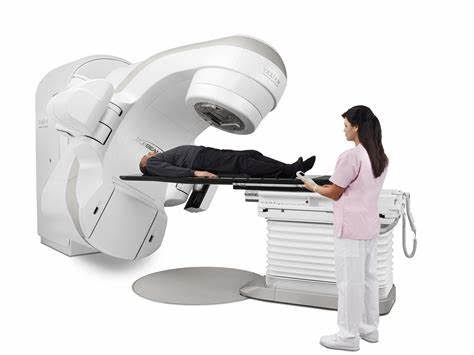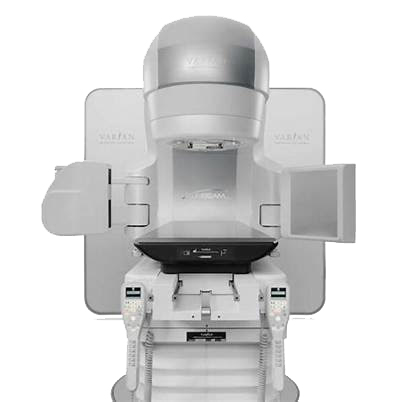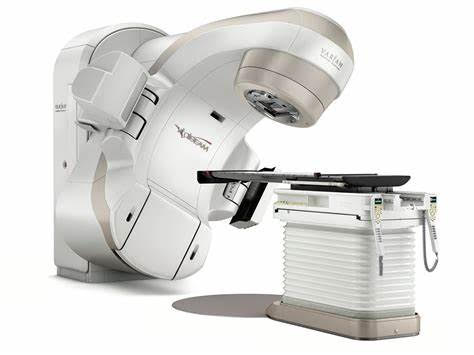ONCOLOGY NEVADA
Advanced Cancer Care
in Northern Nevada
We are a state of the art cancer center serving the greater Reno area. Our goal is to provide and coordinate the highest quality, compassionate care throughout your cancer journey.
Radiation Treatment at Oncology Nevada
Introduction to Radiation Therapy
Radiation therapy is a commonly used tool to treat many types of cancer. It may be used as the only therapy or it is sometimes given in combination with surgery or chemotherapy. The goal of radiation treatment is to deliver high doses of radiation to cancer cells while limiting injury to surrounding normal tissues.
Fortunately, in contrast to cancer cells, normal cells have the capacity to repair themselves after radiation so long as they are not exposed to too much radiation at once. This is the reason for radiation therapy being given over several weeks rather than all at once. The regenerative characteristic of normal cells, coupled with improvements in techniques to target the cancer and limit the dose to normal tissue, has ushered in a modern era of radiation therapy with excellent cancer cure rates and limited complications.
In the case of prostate cancer, radiation treatments must be administered in a way that adequately covers the entire prostate with an accurate, effective dose of radiation. This is challenging due to the fact that prostates are irregularly shaped and varying in size. Inadequate or inaccurate treatment will lead to survival of cancer cells in the prostate (termed “local failure”) or excessive dose to normal tissues such as a the hip bones, bladder, urethra, rectum, and nerve bundles which are involved in normal urinary, bowel, and sexual function and lie in close proximity to the prostate gland.
Radiation can be delivered to the prostate from the outside which is called External Beam Radiation, or by implanting radioactive sources within the prostate, called Brachytherapy. Depending on the aggressiveness and stage of the cancer, either approach may be preferred and sometimes the two approaches are combined.



Brachytherapy
Brachytherapy, pronounced “brack-ay-therapy” (from the Greek word brachy, meaning “short distance”) is a treatment that involves placing radioactive material inside or near a tumor. This allows radiation to conform to the size and shape of the tumor or organ while minimizing radiation to the rest of the body.
LDR (Low Dose Rate) brachytherapy is the most common form of brachytherapy used to treat prostate cancer. It involves an outpatient surgical procedure where tiny radioactive particles smaller than a grain of rice – “seeds” – are implanted directly into the prostate. Each seed emits radiation to a distance of ~3 mm around it and then remains in the prostate as an inert shell. LDR brachytherapy can be used in conjunction with external beam therapy if higher doses of radiation are required.
HDR (High Dose Rate) brachytherapy involves placing tiny hollow plastic catheters into or near a tumor. In the case of prostate cancer, the catheters are placed into the prostate in the operating room under anesthesia. Radiation treatments are then given via these catheters. A computer-controlled machine pushes a single highly radioactive iridium seed into the catheters one by one.
Because the computer can control how long this seed remains in each of the catheters, we are able to manage the radiation dose in different regions of the prostate. This ability to modify the dose during treatment is one of the advantages of HDR brachytherapy. We can give the tumor a higher dose while sparing the bladder and rectum. Once the treatment is completed the catheters are removed leaving nothing in the prostate and the patient goes home. Like LDR brachytherapy, HDR brachytherapy can be used in conjunction with external beam therapy in select patients.
As you can see, the use of radiation therapy is a complex topic. No single form of treatment has been proven to be the best solution for all patients. When considering which treatment is appropriate for a given patient, one must consider the characteristics of the cancer and the patient itself (age, health, and other factors).
SRS is form of radiation therapy that is given in a single dose. SBRT, sometimes called SABR (Stereotactic Ablative Body Radiation Therapy) is a treatment that involves up to 5 treatments. SRS and SBRT are used in cases where the cancer is in only a small number of locations and is adequately small to safely deliver a larger dose in a shorter period of time.
Radiation Treatment
Guy Jones, M.D.
Medical Director

Certification
- Board Certified in Radiation Oncology
State Licensure
- Nevada
- Washington
- Oregon
- Texas
- Idaho
Education
- Washington State University, Pullman, Washington
- Rutgers University, New Jersey
- Internship, Sacred Heart Medical Center, Spokane, Washington
Residency/Fellowship
- National Cancer Institute, Bethesda, Maryland
Additional Information
- American Brachytherapy Society Scholar. Howard Hughes Medical Institute Research Scholar
- Special interests include: running, cycling, rock-climbing, fishing, hiking, football, teaching, research, and mentorship


